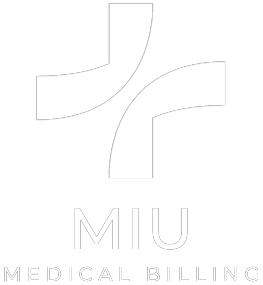Any error made during the course of medical billing has repercussions for multiple providers. A single error could lead to a sequence of consequences such as halted payment processing, failed compliance benchmarks, denial of reimbursements, and dissatisfied patients. Identifying root causes of recurring errors in medical billing systems allows you to develop strategies that result in smoother workflows, which improve processes, operational efficiencies, and revenue capture.
Understanding frequent errors across different practices offers guidance to resolve common systematic obstacles. In this blog, we’ll examine several issues concerning medical billing and offer their remedies.
Inaccurate Patient Information
Outdated insurance details or even a misspelled name could lead to big problems like claim rejections. During appointment scheduling and patient intake, these errors happen all too often.
Impact:
- Immediate denial of claims
- Time-consuming resubmissions
- Patient dissatisfaction
How to Avoid It:
- Implement double-verification of patient demographics
- Use digital intake forms integrated with EHR systems
- Train administrative staff on accurate data entry procedures
- Encourage patients to update their information regularly
By improving the data capture process at the front desk, many billing issues can be prevented before they even arise.
Medical Coding Errors or Outdated Information

Among the most critical and costly mistakes during billing are medical coding errors. Some of these include not updating information such as ICD-10, CPT, or HCPCS codes; undercoding, where necessary codes are omitted; and upcoding, which involves reporting services that were not rendered.
- Audit risks and legal consequences
- Revenue loss or overpayments
- Claim rejections from insurance providers
- Provide ongoing training to coders on standards for coding
- Update subscriptions on industry changes
- Implementation of certified professionals for the coding tasks
Automated tools for code validation can be employed, as well as billing software with compliance checks built into it.
Insufficient or missing documentation
Lack of proper documentation can result in denials being quickly denied.
Every claim must demonstrate medical necessity and match the procedures billed. A mismatch between clinical notes and submitted codes raises red flags for payers.
Impact:
- Payment delays or complete denial
- Increased risk of payer audits
- Reduced reimbursement rates
How to Avoid It:
- Integrate EHR systems with billing for real-time documentation
- Train providers on the importance of thorough charting
- Implement a documentation checklist for high-risk procedures
- Conduct routine internal audits
Remember: if it’s not documented, it didn’t happen—at least in the eyes of the payer.
Duplicate Billing
Duplicate billing occurs when the same service is billed more than once for a patient visit. This could be due to miscommunication between departments or system errors.
Impact:
- Payment denials
- Loses reputation for the provider
- Legal implications and compliance issues
How To Reduce Risk:
- Keep track of billing records and verify that no duplicates exist before submission for claims.
- Employ systems with duplicate detection capabilities.
- Ensure smooth communication between the clinical and billing staff complement.
Regardless of intention, duplicative billing will lead to trust audits and payer scrutiny.
Neglecting To Check Eligibility Verification For Insurance
Billing errors can arise from filing claims for services rendered that are not included in a patient’s insurance contract. Such oversights may occur when there is a delay in capturing changes (or updating changes), and verification processes during follow-up visits are skipped.
- Resolved or pending claims
- Unfulfilled or unclaimed revenue due to billing errors
- Angry and dissatisfied patients
- Claims are not being processed
- Ensure verification log audit files are maintained as well
- Keep records of verifications done in real time
- Save documents of feedback received about verification requests, too
- Due diligence needs to be exercised when considering insurance eligibility—coverage always requires confirmation before care commences.
Failure To Submit Claim Within Specified Duration After Claim Is Created

Most cases of submission delays tend to stem from generic deadlines set by providers, ranging between 30 days and as long as 180 days post-service date, depending on the provider. Not adhering to these guidelines risks creating absolute denial of claim scenarios.”
Impact:
- Lost revenue
- Additional administrative burden
- Increased resubmission workload
How to Avoid It:
- Track claim-filing deadlines by payer
- Automate claim generation and submission
- Set internal cutoffs shorter than payer deadlines
- Audit submission logs weekly
Timely filing should be a top priority in your revenue cycle strategy.
Misuse of Modifiers
Modifiers help clarify procedures for payers, but using the wrong one or omitting it can confuse the claim and lead to denial. Common mistakes involve modifier -25, -59, and others related to evaluation and management (E/M) services.
Impact:
- Claim denials
- Reduced reimbursement
- Regulatory scrutiny
How to Avoid It:
- Provide modifier-specific training
- Implement a second-level review process for complex claims
- Use billing software with modifier validation
A single character can make or break a claim—use them wisely.
Lack of Staff Training
Errors often arise from undertrained or overworked staff who are unfamiliar with billing regulations or software systems.
Impact:
- Consistent denial trends
- Inaccurate reports and KPIs
- High employee turnover
- Arranging for frequent training and certification workshops will help
- Maintain payer-specific policies up to date
- Cross-train staff to ease handling billing traffic jams
- Promote personal responsibility and self-improvement practices throughout the organization
- Your billing department functions as your first line of defense. Ensure that they are properly equipped.
FAQS
1. What are some of the biggest medical billing errors?
Some of the biggest medical billing errors are entering wrong patient information, outdated or incorrect coding, missing relevant documents, duplicate billing submission, and not confirming the insurance eligibility. Such mistakes often lead to payment delays, claim denials, and increased risk of non-compliance.
2. What strategies could healthcare providers employ to avoid billing mistakes?
To avoid these types of mistakes, cut staff through scheduled training with specialized sessions made for targeted areas with frequent issues and updated software, along with proper verification prior to appointments. Billing errors can be avoided by precise documentation that meets required standards around medical necessity without contradictory records as support, alongside meticulous, preemptive, analytic claim audits before document submission.
3. How critical is accuracy in coding while doing medical billing?
Healthcare services are much easier to access when accurate codes are used because services tied to healthcare activities receive markings all throughout the value chain, which help avert denial claims, audits, and legal action risks, alongside properly harnessing ICD-10 and CPT Codes enabling efficient payments, alongside rules-abiding clearance makes each dollar served repeatable, capturing funds exposes less risk setback.
4. What occurs when errors exist on a medical claim form?
Payers may deny or hold up processing a claim that has inaccuracies. These processes of resubmission, supplementary documentation, or appeal submission tend to incur additional costs and significantly impact the provider’s cash flow.
Conclusion: Achieving Profitability Through Precision
Every mistake in medical coding damages the essential bond of trust for any practice. Erosion of patient satisfaction occurs when there are mistakes disrupting revenue cycle operations and reimbursement timelines. These problems can be addressed by implementing gap-based training initiatives, along with proactive and preventative tools tailored to the identified gaps.
Because these areas directly affect provider reimbursements and hospital revenues, healthcare practitioners can benefit from improved EHR systems and a reduction in bureaucratic inefficiencies if persistent structural issues are solved. In-house or outsourced claims processing demands meticulous data collection and documentation; neglect leads to severe consequences. Improving service delivery processes leaves a lasting impact for tomorrow’s patients and clinicians – lessons learned can reward extreme outcomes far beyond expectations.




